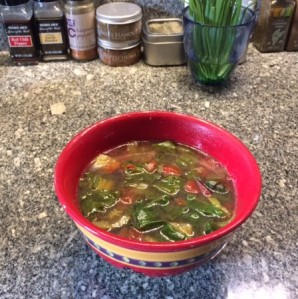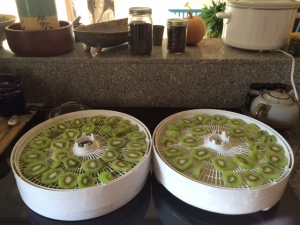Have you ever wondered how Vitamin C and other antioxidants benefit health? I recently took notes on a talk by cardiologist Thomas Levy, who wrote a book in 2002 called Curing the Incurable: Vitamin C, Infectious Diseases, and Toxins. I thought his information was very interesting and pertinent to a time of antibiotic resistant bacteria and negative health effects from antibiotics.
Here’s my notes Dr. Levy’s talk on YouTube (https://www.youtube.com/watch?v=GpptUsJFCEY), with some of my thoughts in italics.
Vitamin C’s discovery is attributed to Albert Szent-Gyorgi, a Nobel Laureate. His hypothesis: the electron flow theory of disease and health. He postulated that health is a state of high electron flow, disease a state of low electron flow.
Antioxidants, like Vitamin C, supply electrons to pro-oxidants (free radicals). Free radicals always take receive and take away electrons. Both toxins and infections are pro-oxidant.
The prominent antioxidants are Vitamins C, E and A, n-acetylcysteine and alpha lipoic acid. They all donate electrons but there are different clinical effects depending on bioavailability. Alpha lipoic acid is fat soluble, vitamin C mostly water soluble and vitamin E is fat soluble. Some concentrate in high levels in particular organs or tissues but vitamin C eventually gets in just about any tissue and is the most effective antioxidant in varying conditions, especially at high enough doses.
Infection Facts
- Always strong promoters of oxidation
- Increased laboratory evidence of oxidative stress or presence
- Associated with decreased levels of antioxidants in affected tissues, body fluids and blood
- Associated with scurvy and the electron depleted state of acidosis
So this means when an infection is severe, there is a large consumption of antioxidants and often the result is clinical scurvy. This is rarely recognized as scurvy because scurvy is normally recognized in its chronic state. But when scurvy is induced dramatically and quickly you mostly see hemorrhage.
An example of this extreme scurvy hemorrhaging is in Ebola infections where it is likely that patients were already very low in vitamin C. Once the infection takes hold, antioxidants are used up very quickly. Toxins (from the environment or produced by infections) will also cause scurvy if potent enough. Acute scurvy is often the cause of death.
Vitamin C and Infection Facts
- Absolute virucide (Klenner, 1953)
- Strongly microbial in general (Klenner, 1953)
- Although often highly effective as a properly administered monotherapy, vitamin C will reliably augment the effects of other more traditional antimicrobial agents such as antibiotics and interferon.
The only times you have clinical failure with vitamin C is when not enough is administered or when you have a chronic infection such as Lyme, hepatitis or HIV. In chronic cases the virus is hidden and not accessible by the vitamin. In these cases, the treatment must be long enough and the dosage high enough so that you eventually reach the virus after all the immune cells turn over to new immune cells.
There was much more information in this talk. What I found most interesting was to learn more about how vitamin C works with electron donation in the body and how acute scurvy is present during acute infections.
There were examples of how intravenous vitamin C treatments have helped people overcome many serious conditions such as:
- Polio (Klenner, 1949)
- Hepatitis (Dalton, 1962; Klenner, 1974)
- Measles (Klenner, 1953)
- Mumps (Klenner, 1949)
Vitamin C also works as a non-specific antitoxin for conditions such as carbon monoxide poisoning, insect bites, mushroom poisoning and spider bites. Dr. Klenner (mentioned above) had a policy in his office where he would start with vitamin C treatment and then take the patient history.
Dr. Levy (the source of the information compiled here) has treated two West Nile virus patients and their recovery was quick. He feels that nobody should die from this virus.
I believe that all of us should consider knowing a doctor that would be willing, able and knowledgeable to administer high doses of vitamin C when we are seriously ill with an infection or toxin. Dr. Levy suggestions about its administration:
- Dose (multigram always)
- Route (intravenous with oral best. Oral gets gut endotoxins)
- Frequency (according to symptoms)
- Type (avoid calcium forms for chronic dosing)
- Adjunct therapies (not usually necessary to avoid)
- Some precaution with preëxisting kidney disease (Levy 2003)
- Rebound (If taking high amounts and suddenly stop after surgical stress you can get a scurvy reaction)
I found this talk interesting and am amazed to learn how powerful vitamin C is and how acute scurvy is a cause of death. I hope this information has been useful for you as well.


